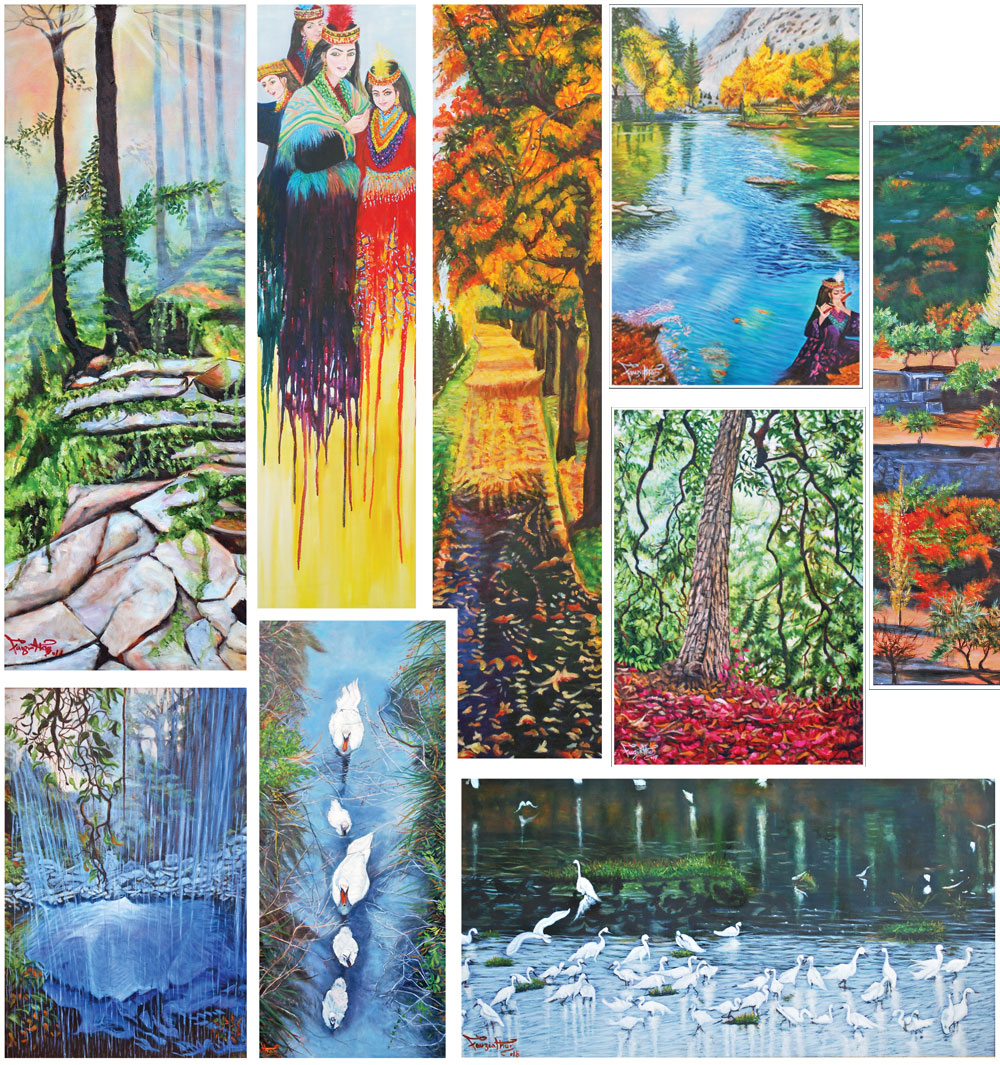ZULFIQAR ALI ZULFI’S HUES OF DUSK
- 29 Oct - 04 Nov, 2022
History tells us that landscape painting has been the most popular genre, not only because of the pride and beauty reflecting people’s love for their country, but because it documents history and carries a wealth of meaning. The art of landscape is much more than decorative art. The most popular schools of landscape have been the Dutch 17th century paintings and landscapes by the Impressionists, but the earliest landscapes discovered belong to the Greek era almost three thousand years ago.
In Pakistan, landscape painting became an integral element of the country’s art development in the 1940s when Professor Anna Molka Ahmed, who began art education at the Punjab University in 1940, took her students outdoor to paint and to the villages around Lahore to open their eyes to nature and the world around them.
The first identifying school of art was initiated under the guidance of Professor Khalid Iqbal with the Punjab Landscape School of Art. It was the first art movement in the country. Many renowned artists are prominent in the movement today.
In Karachi, a school of landscape watercolourists emerged in the early 1960s from the Karachi School of Art largely due to the influence of Mansoor Rahi. In those days, groups of artists went out painting together on weekends.
iewing the work of Fauzia Khan at the Clifton Art Gallery, one is reminded of the beauty of the country that created an art movement and continues to inspire artists.
Fauzia Khan has been showing her work in solo exhibitions since 1990 and has won several awards in the process. She has also participated in over forty group shows to appreciation. Through the manipulation of light and shade, the artist takes the viewer on an absorbing journey, reminding one of the beauty of nature and the joy of colour.

In Fauzia Khan’s exhibition, the viewer travels through water blue and pasture green, and discovers a lake full of beautiful swans. An Ocean of Flowers reveals the varying shades of blue filling the space beneath a contrasting, light evening sky.
One travels from the beauty of Naltar valley reflected in clear water to a triptych portraying Nagar, Gilgit, and continues to travel through the beauty of natural surrounding through various times of the day, when so many aspects change and surprise us.
The artist also paints a series of oil on canvas landscapes named for the emotions and moods they create in the viewer. There is Harmony, trees of warm, toned blossoms against a pale, blue sky, Peace, reflected in clear water. Draped in Gold has the bounty of nature covered with sunshine. Reflections depicts numerous colours of trees, grass, blossoms and water, while Silence ushers its audience in the beginning of evening, with nature sleeping beneath a deepening sky.
Fauzia Khan has titled her exhibition Tantalising Mysteries, and viewing her work, we ponder with her on the magical facets of nature in a world of people who so often appear to forget their heritage, in the problems of day to day living. One must remember the fact that there is much more to a landscape painting than just admiring the view. Painters are aware that while human beings may convey varied emotions in an artwork, landscape is able to convey an equally versatile range of human feelings. Through the artist’s manipulation of colour, light and space, the viewer is transported to an absorbing journey, an experience evoked by the artist’s ability to create a sense of atmosphere of time and place. •
COMMENTS